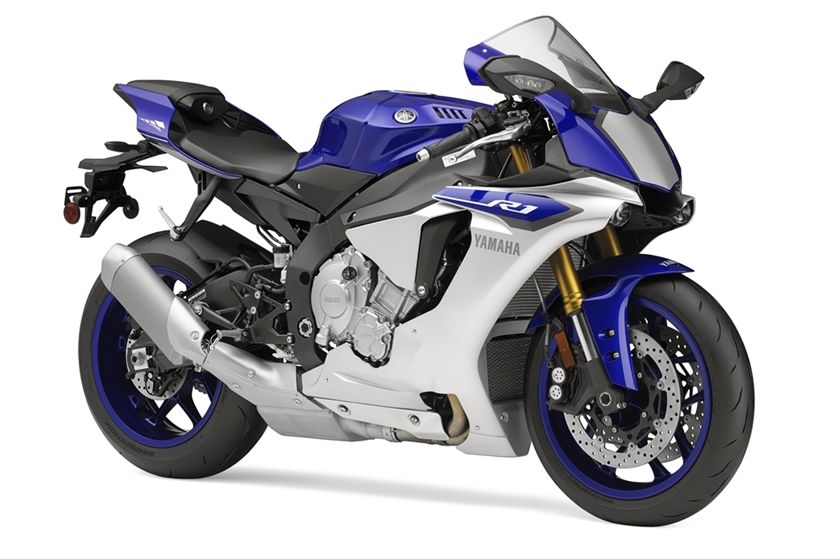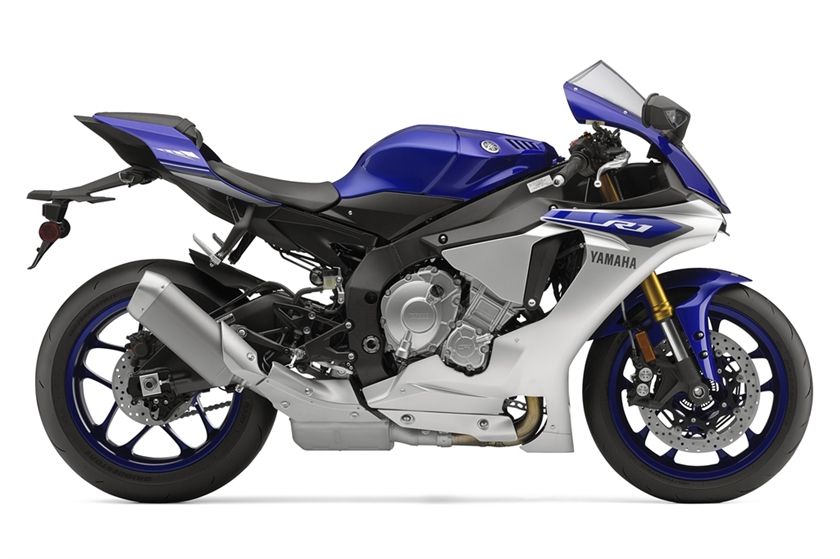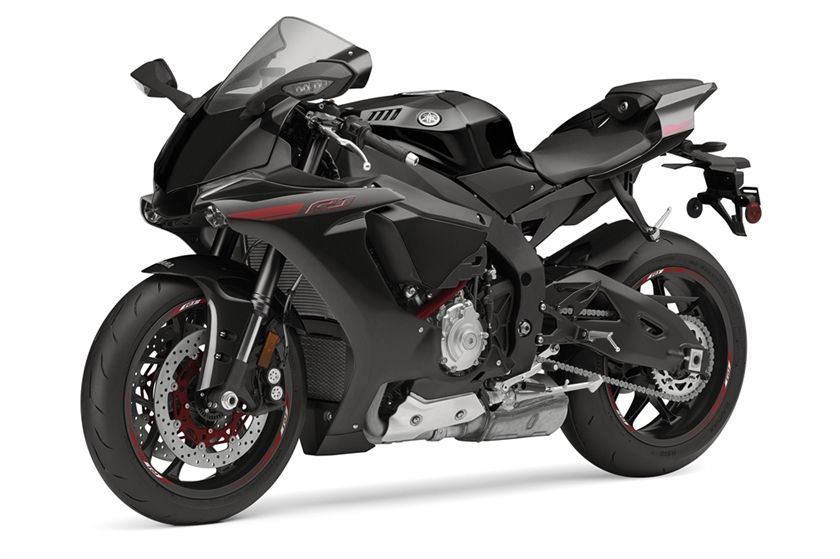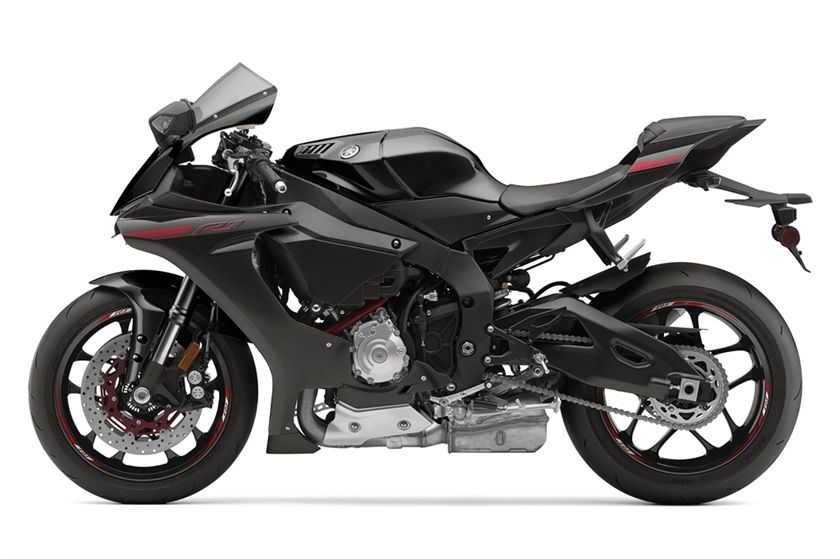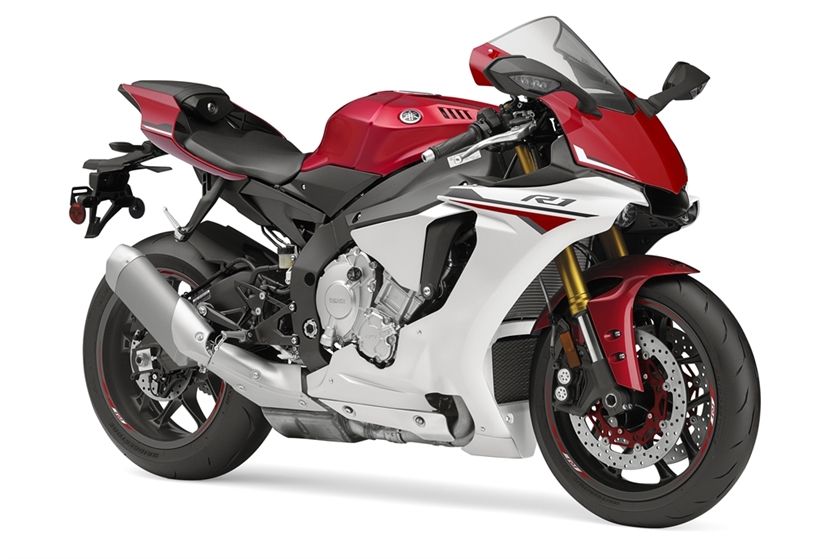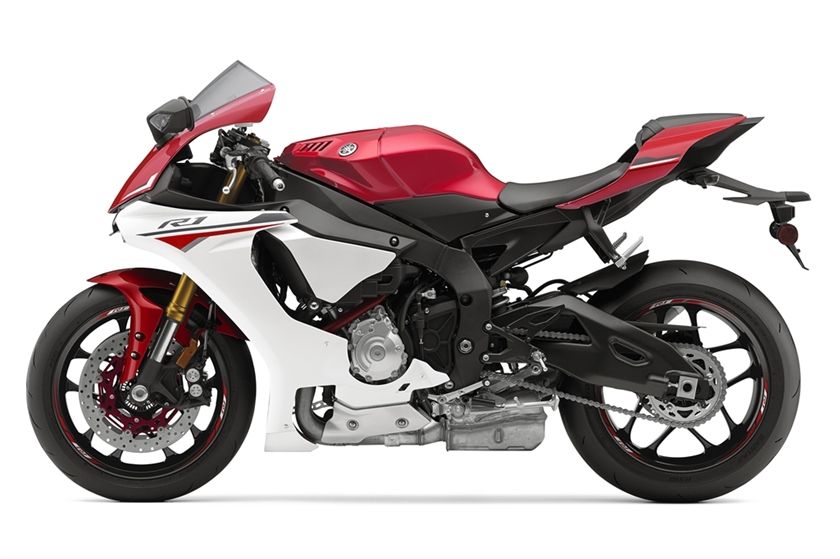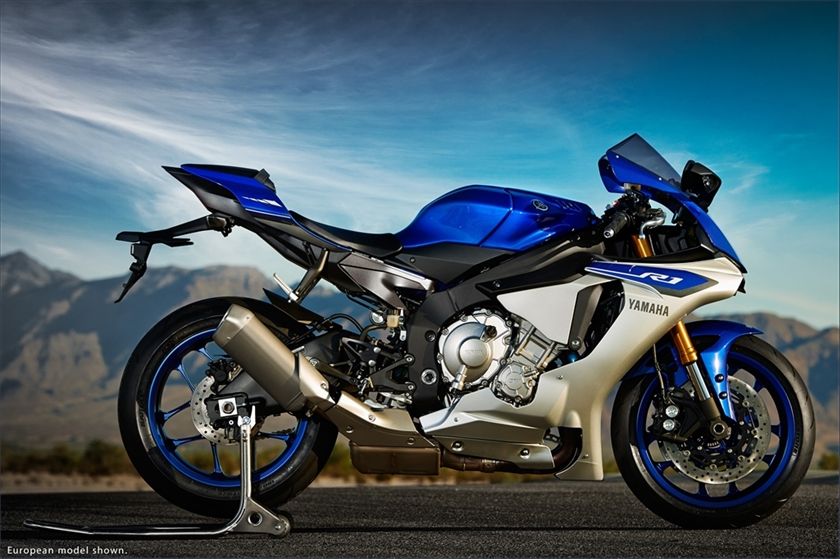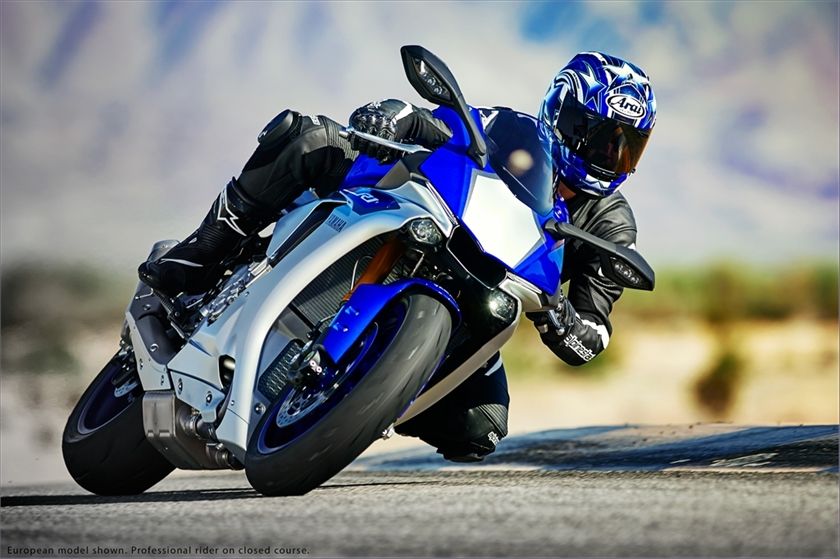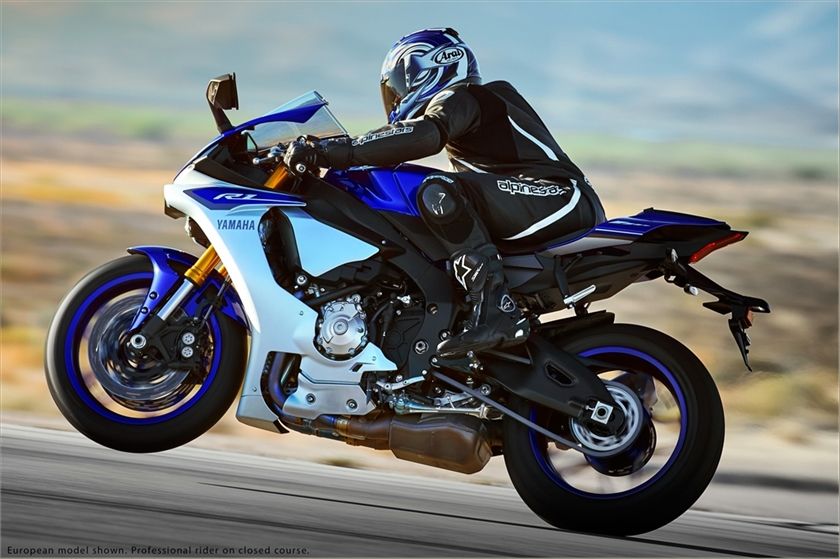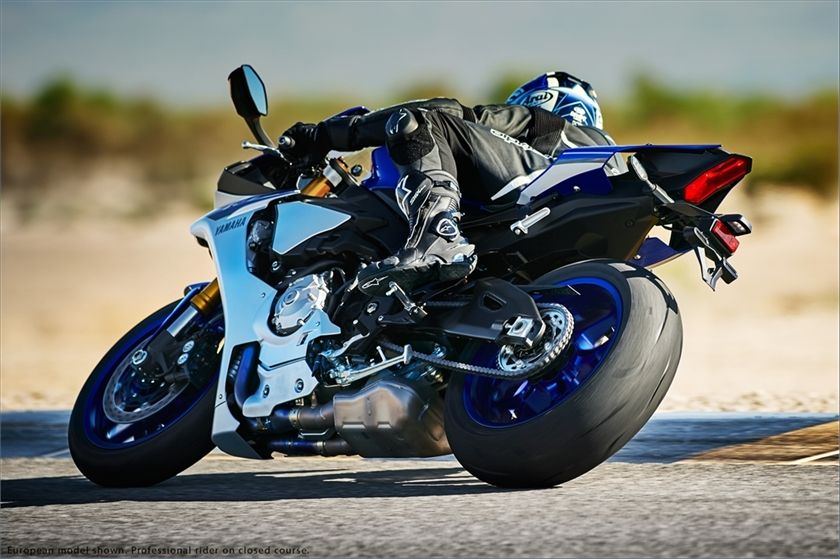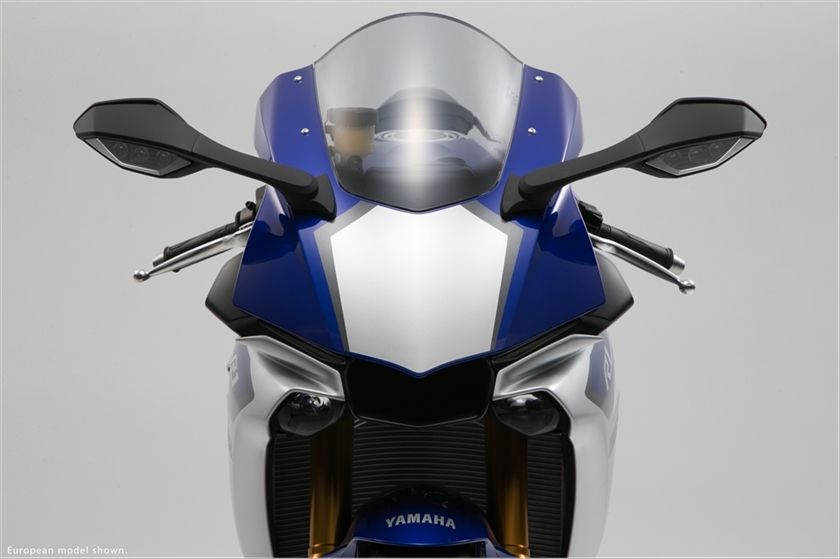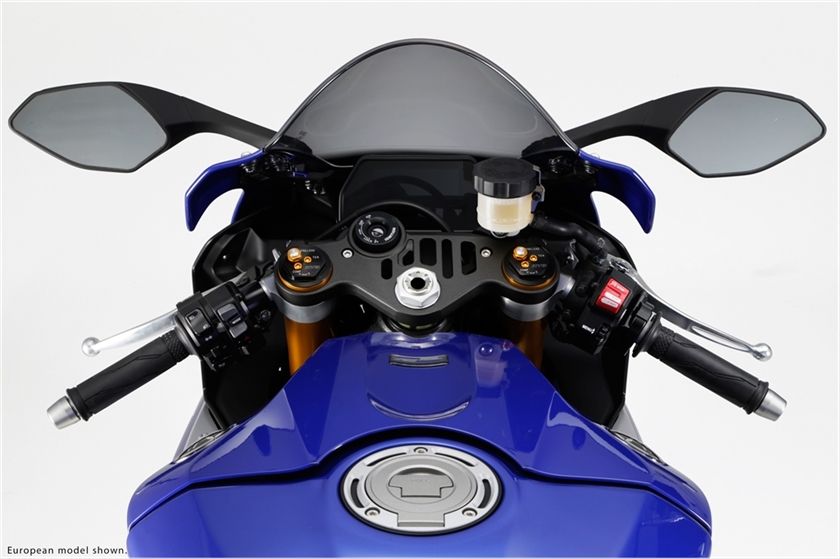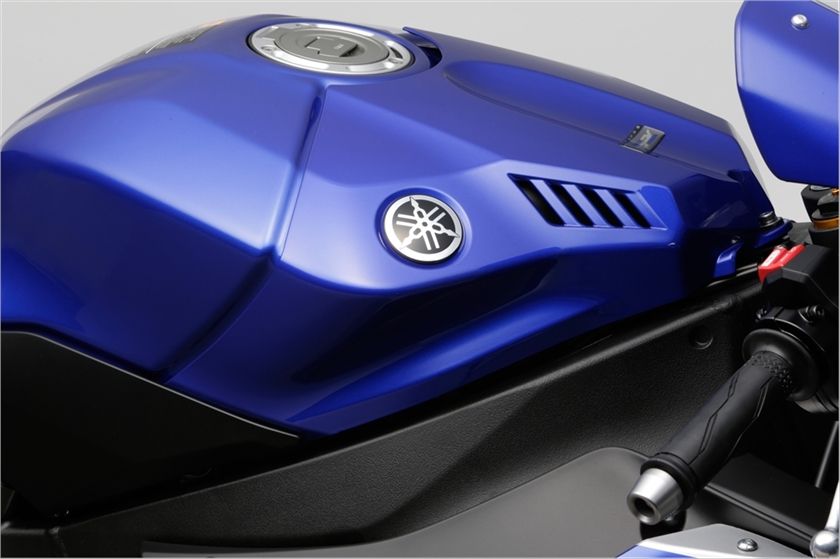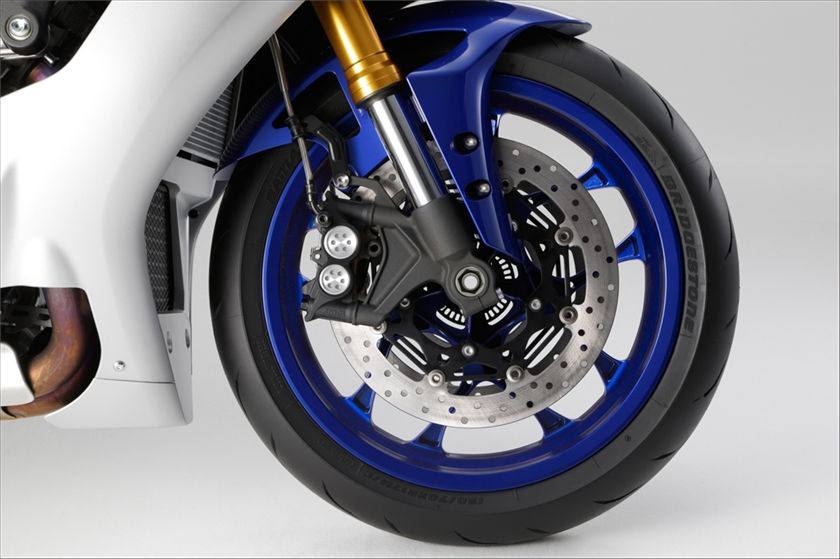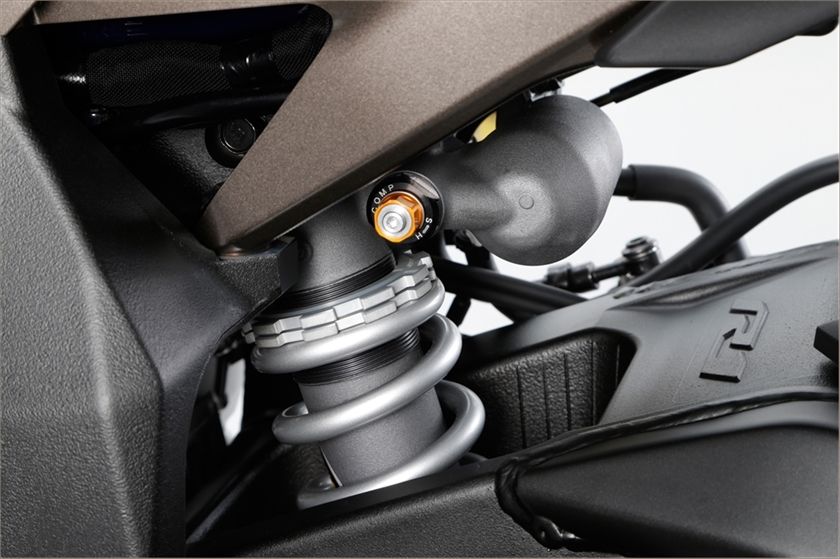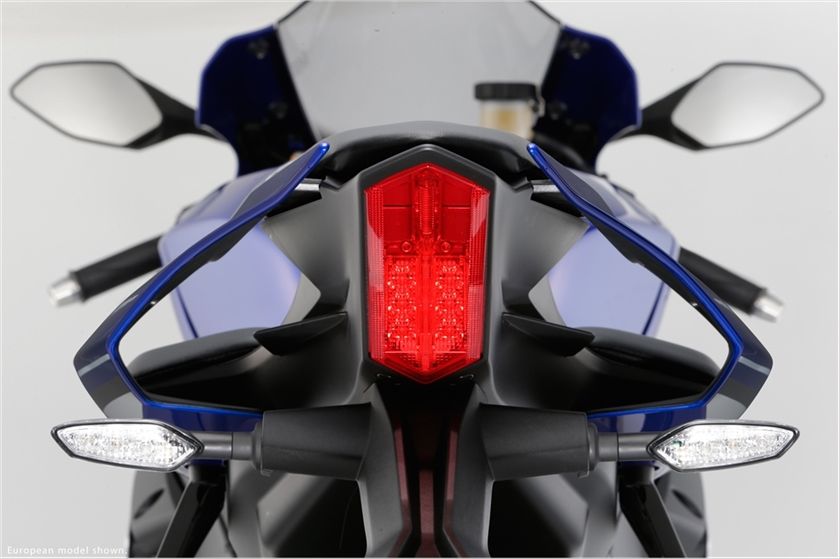Yamaha->ke301 has made it known that the new YZF-R1 isn’t just your typical supersports->ke293 bike. Heck, using the word “typical” might not even do it justice. The YZF-R1 is a god send of a supersports bike, the rare kind of machine that can justifiably say that it was born straight out of the MotoGP technology.
The Japanese bike brand calls the YZF-R1 “the most MotoGP-inspired motorcycle ever.” I’m not going to argue with that because the bike certainly has the credentials to carry that title proudly. At the very least, you can call the R1 as the humanized version of the YZR-M1, the very machine that Yamaha riders Valentino Rossi->ke1462 and Jorge Lorenzo will use at the soon-to-begin 2015 MotoGP season.
Anytime a bike like the R1 can be compared to a machine for the ages like the M1, you know you have something special on your hands. Even if the R1 doesn’t carry the same frightful technology as the M1, this supersports bike remains right at home on the track as it does pretty much anywhere else.
Click past the jump to read more about the Yamaha YZF-R1.
yamaha-yzf-r1
- Make: Array
- Model: yamaha-yzf-r1
2015 Yamaha YZF-R1
- Make: Array
- Model: 2015 Yamaha YZF-R1
- Engine/Motor: Liquid-cooled inline 4 cylinder DOHC 16 valves
- Transmission: 6-speed
Design
You want a bike that looks every bit the part of an all-out road-conqueror? The Yamaha YZF-R1 is just the bike for you. It’s easy to get caught up in the bike’s name, but what’s really important is that Yamaha really went all out to give it a look that justifies its R1 lineage.
The biggest difference with the new R1 is that it looks much more compact than its predecessor. That’s not necessarily a bad thing because it actually gives the supersports bike a leaner and more svelte appearance. It’s pretty sexy, right?
All the components were carefully designed with performance in mind. That’s probably a reason why the front fairing looks smoother and less bulgy than what we’re used to. Even the front panel appears to be less interested in looking good than it is justifying its performance credentials. The only noticeable element are the twin LED headlights poking out from beneath the panel, and you really have to look really close at the bike to notice it. You might also notice that the bike comes with all-new LED front turn signals that are integrated into the mirrors.
The R1 features a thin-film transistor LCD meter, with brilliant color for precise monitoring of all vehicle systems, including front brake pressure and fore/aft G-force making it easier than ever to take the bike to its limits. It features a “street mode” and a “race mode” that focuses on information that’s more important on the track, such as YRC settings, a zoomed in view of the tachometer in the upper rpm range, a lap timer with best lap and last lap feature, gear position indicator and speed, just to name a few.
The R1 also has a new TFT dash that’s aesthetically pleasing and functional. A thin-film transistor LCD meter offers critical monitoring of the bike’s performance guts, including the front brake pressure and fore/aft G-force. These details are important so that a rider knows when the bike is being pushed to the limit. The R1’s street and race modes can also be displayed on the screen, with specific details highlighted depending on the mode the bike is on at a particular time.
Design Specifications
Frame
The overall architecture of the YZF-R1 is based on Yamaha’s all-new aluminum Deltabox frame and magnesium subframe that not only helps reduce the bike’s overall weight - it weighs just 443 pounds! - but also contributes greatly in establishing a compact chassis design and is strong and flexible enough to provide good balance and great cornering performance. The new R1’s wheelbase is also .4 inches shorter than its predecessor, allowing the new model to generate improved corner performance, especially at high speeds. The bike can do all of that despite having a 40.5 percent ratio of swing arm length to wheelbase, same as its predecessor.
The bike’s suspension setup features an equally new inverted KYB front fork with 1.7-inch inner tubes and a 4.7-inch stroke with full adjustability. There’s also a fully adjustable KYB shock that has a new rear bottom link pivot position, optimally placed to provide exceptional handling, and excellent transmission of engine torque to the track surface.
Move to the wheels and you’ll see that the new R1 has been fitted with 10-spoke cast magnesium wheels that reduce rotational mass by 1.9 pounds over the previous model. The new wheels also reduces unsprung weight, enabling the bike to engage in quick direction changes. The wheels are then complemented by a track-developed and race-tested ABS and Unified Braking Systems providing maximum braking performance. 
Frame Specifications
|
Suspension / Front |
43mm KYB® inverted fork; fully adjustable; 4.7-in travel |
|
Suspension / Rear |
KYB® Single shock w/piggyback reservoir, 4-way adjustable; 4.7- in travel |
|
Brakes / Front |
Dual 320mm hydraulic disc; 4-piston caliper, UBS ABS |
|
Brakes / Rear |
220mm disc; UBS ABS |
|
Tires / Front |
120/70ZR17M/C |
|
Tires / Rear |
190/55ZR17M/C |
Drivetrain
The Yamaha YZF-R1 certainly doesn’t lack in power. How could it, especially since it comes from a lineage of supersports bikes that have blazed a whole lot of trails in MotoGP. The 2015 R1 continues that smash mouth tradition, thanks to a 998cc inline four-cylinder engine that pumps out an incredible 200 horsepower and 83 pound-feet of torque. The new R1’s crossplane crankshaft is similar to the one used in the last generation version of the supersports bike so you can at least expect the new model to pump generous amounts of torque, especially in the lower rev ranges. That’s a yummy recipe, if I do say so myself.
Power from the liter-displacement engine is sent to the wheels courtesy of a new six-speed transmission that brings out more of the low- to mid-speed torque to go with excellent response characteristics, all while reducing the need for a rider to do frequent shifts.
When it’s rocking on full cylinders, the YZF-R1 is capable of hitting a scintillating top speed of 186 mph. There’s fast, and then there’s really, really fast. The YZF-R1 does its MotoGP heritage proud by being part of the latter.
Drivetrain Specifications
|
Engine Type |
Liquid-cooled inline 4 cylinder DOHC 16 valves |
|
Displacement |
998cc |
|
Bore x Stroke |
79.00 x 50.9mm |
|
Compression Ratio |
13.0:1 |
|
Fuel Delivery |
Fuel Injection with YCC-T and YCC-I |
|
Ignition |
TCI: Transistor Controlled Ignition |
|
Transmission |
6-speed w/multiplate slipper clutch |
|
Final Drive |
O-ring chain |
Electronics
Befitting a supersports bike of its stature, the YZF-R1 gets plenty of MotoGP-inspired goodies, beginning with a six-axis “Inertial Measurement Unit” (IMU) system that specifically measures pitch, roll, yaw, an acceleration of the bike through the use of gyros and accelerometers. The IMU system works well with Yamaha’s Ride Control ECU to provide important rider assist, safety and go-fast data, including full-throttle launch control, lean angle sensitive traction control, four-stage slide control, four-stage lift control, and linked ABS braking.
Pricing
The 2015 Yamaha YZF-R1 is packed with all these goodies for a reason. It’s fast, powerful, and really expensive. How expensive, you ask? $16,490.
If you have that kind of scratch to spare, be prepared to get in line because the 2015 YZF-R1 is set to become available in February 2015.
Quotes
“Introducing the most MotoGP inspired R1 ever. From the advanced Rider Active electronics package, to the powerful crossplane crankshaft engine, the line between Supersport bike and factory MotoGP has never been more blurred. Everything except the name has changed. MotoGP, the highest form of motorcycle racing in the world, is our proving ground. The technology Yamaha has pioneered and proven on MotoGP circuits around the world can now be enjoyed by racers and riders alike. The all new R1 provides racers and enthusiast sport riders with a taste of what it would be like to ride the championship winning Yamaha M1. A showcase of Yamaha's technology leadership, the all new R1 raises the bar with its uncompromised performance and handling.” ----- Total Motorcycle“An all new machine from Yamaha, the new YZF-R1 is a giant leap forward from Yamaha, with its eyes squarely on dominating the race track, throughout all racing leagues. At the core of the new R1 is a new crossplane motor, now dubbed the CP4 engine, which is producing 200hp without ram-air. The engine features titanium fracture-split con-rods, 10.5 liter airbox, titanium exhaust, and a slipper clutch to boot. For the 2015 Yamaha YZF-R1 though, the story is really all about the electronics. Packed with zeros and ones, the new Yamaha YZF-R1 features traction control, slide control, launch control, wheel-lift control, and anti-locking brakes. The bike is aided by a six-axis inertial measurement unit (IMU), which ties the systems together and allow the R1 to have a better understanding of how the bike is moving on the street and on the track. Surprisingly, the 2015 Yamaha YZF-R1 has cast magnesium wheels, for less rotating mass. The rear subframe is also made out of magnesium for added weight reduction.” ----- Asphalt and Rubber

